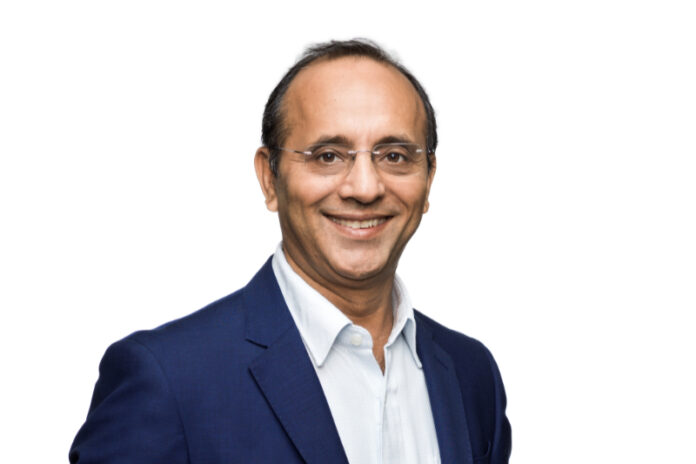In the age of hyperconnectivity, telcos play a pivotal role in ensuring people and organisations get to conduct their business day in and day out.
Operating within Singapore’s highly challenging business landscape, M1 has been undergoing a transformation from a pure-play telco to a technology provider. In a competitive race for market dominance against rivals StarHub and Singtel, it became evident that M1 needed to surpass the existing capabilities of 5G.
Manjot Singh Mann, CEO of M1, recently spoke with Frontier Enterprise to discuss the company’s strategy for its enterprise business.
As a starting point, the telco undertook a comprehensive overhaul of its legacy technology stack by implementing a new cloud-native digital platform on Microsoft Azure.
“We built a data lake by aggregating some 200 databases and systems to better understand consumer behaviour and provide relevant recommendations to users. While this practice is common in the e-commerce industry, it is relatively new to the telco sector. Hence, one significant challenge is to train and educate employees about the new platform’s capabilities, features, functions, and how each component works together to contribute to a revamped data architecture,” explained the Chief Executive.
Data strategy
In order to meet the evolving needs of its enterprise customers, M1 recognised the importance of empowering its teams across departments with access to data, as well as the ability to act based on that data.
“Data analytics have been an important part of M1’s growth. To facilitate data-driven decision-making across marketing, finance, customer service, and retail teams, M1 ingests and analyses massive amounts of operational data,” Mann noted.
To ensure robust data governance and secure customer data, M1 has partnered with data cloud company Snowflake. This collaboration enables M1 to enhance its data security measures and establish effective safeguards for securing customer data.
Snowflake’s platform acts as the hub where raw data from source systems is initially replicated into the data lake. The data undergoes cleansing, transformation, and loading processes to create data schemas and models required by each business function.
“By leveraging our data lake, we are able to establish a single source of truth and enable a complete view of the customer experience journey,” the CEO said.
Additionally, through integrations with ThoughtSpot and Tableau, M1 introduced self-service analytics capabilities across the organisation so that users can generate insights and reports independently. This is said to help M1’s teams in making data-driven decisions efficiently and reduce their reliance on their IT department for analytics and reporting tasks.
As a result, M1’s data scientists now spend less time analysing data and more time building statistical models that deliver tangible value for customers.
Alongside the infrastructure upgrade, M1 placed considerable emphasis on its most valuable resource— its people.
“As M1 transformed, it was crucial to ensure that the entire company, especially our people, were part of that journey. Just as technological capabilities changed, ways of working needed to evolve as well. To achieve this, we have been retraining, reskilling and upskilling our people from the very start, to help them keep pace with rapid changes and agile methodologies,” Mann said.
The goal, the CEO stressed, was to have their employees thinking digitally and operating as part of a digital organisation. This would enable M1 to be more agile and efficient in bringing new services and offerings to market, catering to the ever-changing demands of consumers and businesses.
Leveraging 5G
Following the rollout of its 5G SA offering islandwide, M1 partnered with Fullerton Health to introduce 5G-enabled telemedicine services for the maritime sector, utilising M1’s 5G SMARTsafe solutions.
M1’s 5G standalone suite, which it calls a “solution-in-a-box,” enables the integration and deployment of 5G-powered solutions, starting with the maritime industry. As its capabilities expand, the 5G suite can be applied across various industries, including estate management, energy and utilities, manufacturing, logistics, public services, retail, and even MICE events, Mann said.
The suite specifically aims to address the following areas:
- M1 SMARTsafe: Worker safety solutions that use machine learning to detect risks and predict accidents based on historical data.
- M1 SMARTsecure: Security surveillance and management solutions that provide real-time, “lag-free” video surveillance at sea.
- M1 SMARTasset: Asset uptime solutions that use autonomous robotics for inspecting critical assets.
- M1 SMARTops: Workforce productivity solutions equipped with 5G-enabled tools, such as smart glasses, to help businesses enhance productivity and efficiency.
Evolving solutions
Currently, M1 provides various services under its enterprise banner, including enterprise computing, managed infrastructure, managed network solutions, managed security solutions, and managed applications and solutions.
During the company’s digital transformation, Mann emphasised the importance of leveraging customer behaviours from both from their consumer and enterprise businesses, which have been crucial to their success.
“Our approach is shaped by the data we have, allowing us to offer highly personalised services. We can rapidly and accurately customise products, services, and business solutions to meet our customers’ specific needs,” he said.
Moving forward, the telco plans to continue harnessing the power of 5G and ICT technologies, such as hybrid cloud, to deliver innovative digital solutions for its enterprise customers. The aim is to ultimately create a positive impact on their clients’ end users.
















